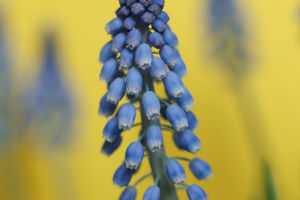Common Sneezeweed (Helenium autumnale), often overlooked in floral discussions, boasts a rich language of its own.
This hardy perennial, native to North America, is celebrated not just for its vibrant appearance but also for its symbolic meanings and historical significance.
Understanding the flower language of Common Sneezeweed offers insights into its cultural relevance and the deeper messages it conveys through its blooms.
A Burst of Color and Character
Common Sneezeweed is easily recognizable by its daisy-like flowers that bloom from late summer to fall. The plant produces clusters of bright yellow to orange flowers, sometimes with red or brownish tints at the center. These striking blooms, standing tall on sturdy stems, attract not only human admirers but also a host of pollinators, including bees and butterflies.
The vivid hues of Common Sneezeweed are not merely for show; they play a crucial role in its symbolism. The bright yellow and orange colors are often associated with warmth, energy, and positivity. In the language of flowers, these colors convey feelings of joy and enthusiasm. The Common Sneezeweed, with its radiant blooms, represents a vibrant and resilient spirit.
Symbolism and Historical Significance
Historically, Common Sneezeweed has been linked to various cultural practices and beliefs. Native American tribes utilized the plant in traditional medicine, often employing its dried flowers in ceremonial rites. The name "Sneezeweed" itself originates from the plant's historical use as a sneezing powder, derived from its dried, powdered flower heads.
In the flower language, Common Sneezeweed is a symbol of perseverance and healing. Its robust nature and ability to thrive in diverse conditions reflect a message of resilience and adaptability. This symbolism is particularly relevant in times of challenge or transition, where the flower serves as a reminder of inner strength and the capacity to overcome adversity.
Flower Language and Modern Interpretations
In contemporary floral symbolism, Common Sneezeweed's vibrant colors are often associated with energy and vitality. It is a flower that encourages embracing life with enthusiasm and a positive outlook. The symbolism extends beyond mere aesthetics, offering a deeper message about how to approach life's challenges and joys.
The flower language of Common Sneezeweed can be seen as an invitation to focus on personal growth and self-improvement. Its ability to flourish in less-than-ideal conditions makes it a metaphor for perseverance and the pursuit of one's goals despite obstacles. In this light, the Common Sneezeweed becomes a symbol of empowerment, encouraging individuals to harness their inner strength and pursue their passions with vigor.
Common Sneezeweed in Floral Arrangements
In modern floral arrangements, Common Sneezeweed is often used to add a touch of rustic charm and vibrant color. Its long-lasting blooms make it a popular choice for late summer and fall bouquets. When incorporated into arrangements, Common Sneezeweed not only enhances the visual appeal but also imparts its symbolic messages of energy and resilience.
For those seeking to convey a message of encouragement or support, including Common Sneezeweed in a bouquet can be a meaningful choice. Its vibrant colors and enduring nature make it an ideal flower for celebrations of personal achievements or milestones, as well as for offering comfort and strength during difficult times.
Practical Uses and Considerations
While the Common Sneezeweed’s flower language is rich and multifaceted, it’s also important to consider its practical aspects. The plant is known for its adaptability and can thrive in various soil types and conditions. However, it should be noted that the plant’s foliage can be toxic if ingested, so it’s best kept away from pets and small children.
In gardens, Common Sneezeweed serves as an excellent addition to pollinator-friendly landscapes. Its ability to attract bees and butterflies makes it a valuable plant for supporting local ecosystems. Additionally, the plant's hardy nature and low maintenance requirements make it a suitable choice for gardeners seeking vibrant blooms with minimal fuss.
Common Sneezeweed, with its vivid blooms and rich history, offers a unique perspective on the language of flowers. Its bright colors symbolize joy, energy, and resilience, while its historical uses and cultural significance provide deeper layers of meaning. Whether in a garden or a floral arrangement, this unassuming flower carries with it a message of perseverance and vibrant vitality, reminding us to embrace life’s challenges with enthusiasm and strength.
In understanding the flower language of Common Sneezeweed, we gain not only an appreciation for its beauty but also a meaningful connection to its symbolic messages. This flower, often overshadowed by more popular blooms, stands as a testament to the power of nature to inspire and uplift.


